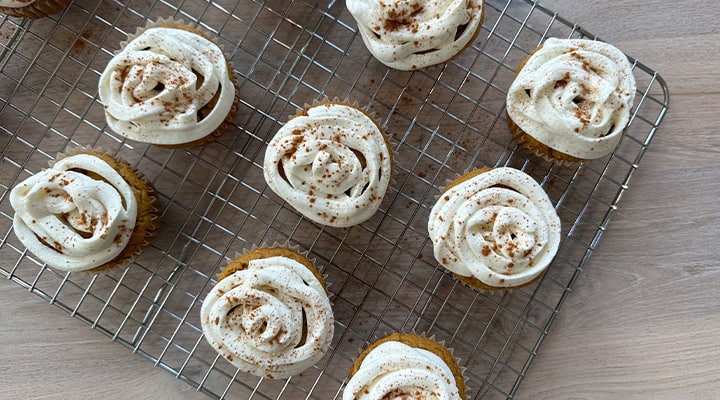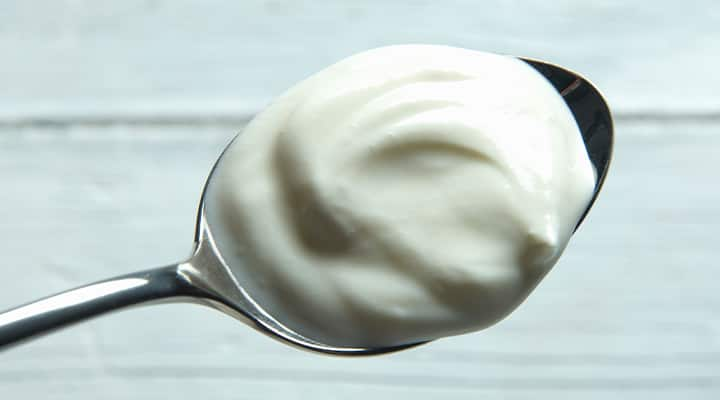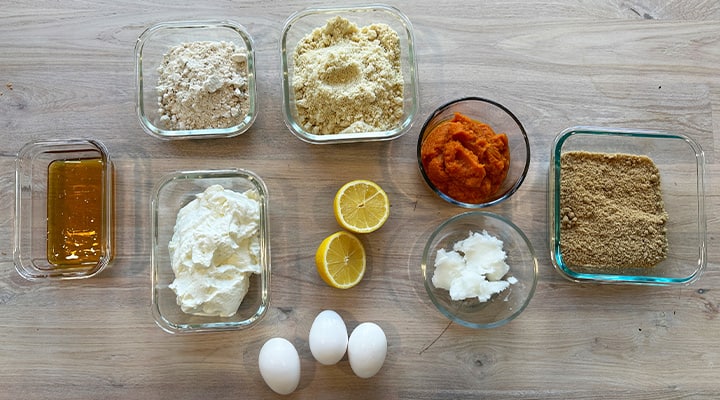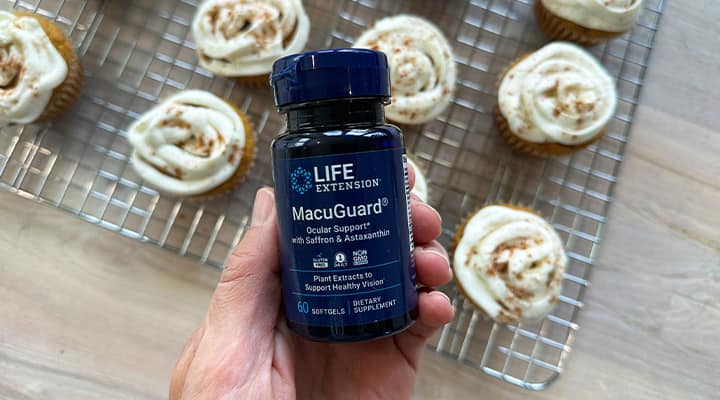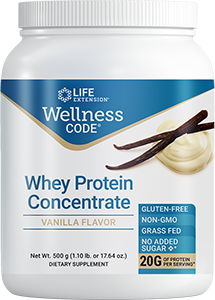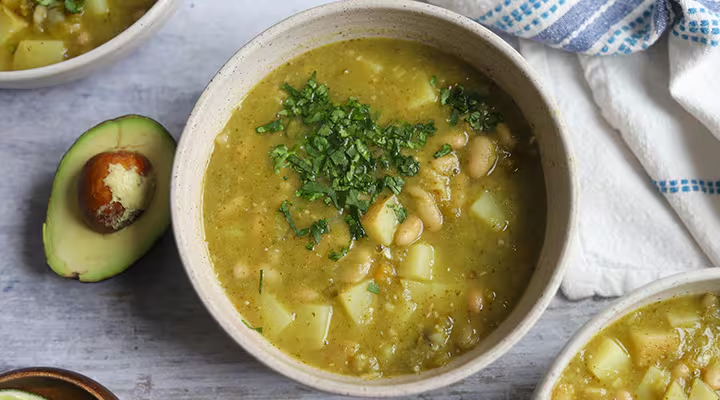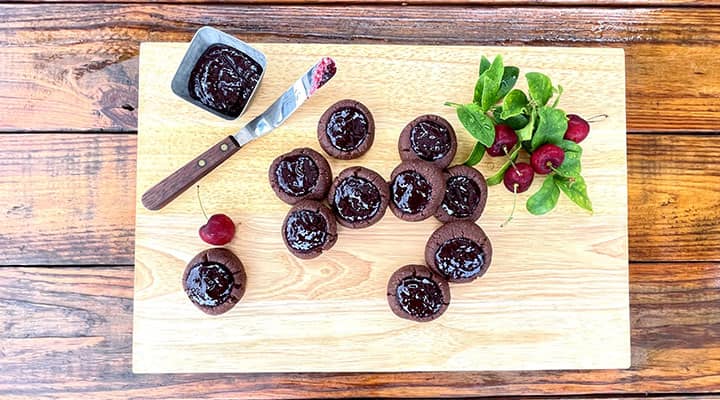
Pumpkin Muffins with Greek Yogurt Frosting
Published: October 2024
Pumpkin lovers, you're in the right place! The air is turning crisp, the leaves are changing color, and fall harvests are filling store shelves. The hearty, nostalgic flavors of fall produce like apple and pumpkin are some of my favorite things about the season.
This frosted pumpkin muffin recipe combines some of those fall flavors into a soft, moist, and delicious baked good. To top it off, we've put a healthy spin on the frosting. Instead of cream cheese, we're using an ingredient you may not have tried before: Greek yogurt.
This frosted muffin is a healthier version than that morning Starbucks detour, and is equally appropriate for breakfast and dessert. Plus, it delivers the health benefits of beta-carotene and eye-supporting astaxanthin in a tasty fall treat.
What are frosted pumpkin muffins?
Pumpkin muffins are easy to make, and you may already have most of the ingredients in your pantry. These moist and fluffy muffins combine the heartiness of pureed pumpkin with the tangy sweetness of Greek yogurt. They use healthy alternatives in place of the traditional all-purpose wheat flour and cream cheese ingredients. These healthier substitutions help give you nutrients, vitamins, and yummy pumpkin flavor in a lower-sugar and lower-fat treat.
While muffins are a popular fall treat, pumpkin is used to create a variety of fall desserts, including:
- Pumpkin bread
- Pumpkin snickerdoodles
- Pumpkin pie
- Pumpkin coffee cake
- Pumpkin chocolate chip bars
- Pumpkin cheesecake
All of these treats deliver the delicious taste of pumpkin as well as its vitamins and minerals, which support heart, vision and brain health, as well as healthy skin. They can also be made using healthy swaps of common ingredients. For example, instead of wheat-based all-purpose flour, you can use almond and oat flour. To use less oil in pumpkin bread or cake, try substituting unsweetened applesauce.
And for a lighter dish that still tastes amazing, swap all or most of your cream cheese for Greek yogurt, as we've done in this pumpkin pie dip. (You'll see exactly how to make that swap in the recipe below.)
Why use Greek yogurt for your pumpkin muffin frosting?
If I see a dessert with cream cheese, I'm most likely going to eat it. Cream cheese is delectable in every form. However, in plain Greek yogurt, you'll find more protein and less fat and calories than in cream cheese. Greek yogurt also has the benefits of fermentation and is a nutrient-dense food. Even better, there is no need to sacrifice flavor when using Greek yogurt. The frosting is still creamy and just as pleasing to the taste buds.
You'll notice the Greek yogurt is strained before using it as a frosting. This is a great baking hack to use when you need a frosting with a similar texture to cream cheese. Straining the yogurt removes the moisture and creates a thick frosting that is easy to spread or pipe onto your muffins. While the Greek yogurt must sit for a few hours, it takes less than five minutes of prep time to set up the straining, which creates a better frosting texture.
Explore Our Best Astaxanthin Supplements
Pumpkin Muffins with Greek Yogurt Frosting
Ingredients:
- 2 cups almond flour
- 1 cup oat flour
- ¾ cup brown sugar
- 1 tsp baking soda
- 1 cup pure pumpkin
- ¼ cup coconut oil, melted
- 3 eggs
- 2/3 cup unsweetened almond milk
Frosting
- 2 cups plain Greek yogurt
- Juice from ½ lemon
- 1 tbsp honey
- Cinnamon, if desired
Preparation:
- Place a colander into a bowl. Double-line the colander with paper towels (use one towel folded in half). Spoon Greek yogurt onto the paper so the moisture soaks through and drips into the bowl under the colander.
- Cover the yogurt with plastic wrap and place in the refrigerator for at least 4 hours.
- Add almond flour, oat flour, brown sugar, and a teaspoon of baking soda to a bowl. Stir dry ingredients to combine.
- Mix in pumpkin, coconut oil and eggs.
- Next, stir in ⅔ cup milk and stir until lumps are removed.
- Line muffin cups with muffin liners and pour batter into each muffin cup, filling about ⅔ full.
- Bake muffins at 350 degrees F for 20-25 minutes (until middles are cooked through).
- Transfer muffins to a cooling rack and let cool completely.
- While muffins are cooling, remove strained Greek yogurt from the refrigerator. Spoon into a bowl and whisk with lemon juice and a tablespoon of honey.
- Scoop yogurt frosting into a piping bag (or into a zip-top bag and cut a corner).
- Pipe onto cooled muffins and top with ground cinnamon.
Nutritional Values per serving*
Total Servings: 16Calories: 220
Protein: 8 g
Carbohydrates: 20 g
Fat: 12 g
*All nutritional information is based on third-party calculations and is only an estimate. The values will vary depending on the brands you use, measuring methods and portion sizes.
Tips for success
You're more likely to love your pumpkin muffins if you follow the advice below.
- Use the meat of a fresh pumpkin in this recipe (simply bake it to soften), and don't forget to save your seeds, which have their own health benefits.
- If you choose to use canned pumpkin, be sure to choose pumpkin puree, not pumpkin pie filling. Pumpkin puree has more fiber and protein, and far less sodium, carbohydrates and added sugar, than pie filling.
- For more of a pumpkin pie spice flavor, add cinnamon, ground cloves, and a pinch of nutmeg to the dry ingredients before mixing the muffin batter. Adding a teaspoon of vanilla extract to the batter after mixing will also complement the pumpkin flavor, but it's not necessary.
- If you desire to use all-purpose wheat flour, substitute 1:1 with almond flour and oat flour (using three cups total).
- If you use a flavored yogurt, omit the honey. Pumpkin pairs well with vanilla and strawberry flavors, but be aware of the added sugars in flavored yogurt.
- Are you a chocolate lover like me? Mix chocolate chips into the batter after adding the milk.
- Store frosted muffins in the refrigerator for up to 4 days.
Are pumpkin muffins enough to support your eye health?
Pumpkins are packed with nutrients to support both eye health and cognitive health. This fruit contains vitamin C and carotenoids like beta-carotene, lutein, zeaxanthin, and astaxanthin. Studies show these carotenoids promote healthy vision and cognition, especially as we age. Pumpkin is also full of fiber, which encourages digestive health, and important minerals, such as potassium, iron, zinc, copper and magnesium.
While it's important to get key nutrients from your food intake, it may not be feasible to eat pumpkin and other carotenoid-rich fruits daily to support your eye health. A daily supplement with astaxanthin is a more convenient way to support healthy eyes and keep them functioning well, even over time. Astaxanthin supplements also support healthy joints and encourage immune and heart health.
Looking for nutrients to keep your vision sharp? Take our health needs quiz for a recommendation personalized to you.
References
- Hadjimbei E, et al. "Beneficial Effects of Yoghurts and Probiotic Fermented Milks and Their Functional Food Potential." Foods. September 2022. https://pmc.ncbi.nlm.nih.gov/articles/PMC9455928/
- Hussain A, et al. "A review on biochemical constituents of pumpkin and their role as pharma foods; a key strategy to improve health in post COVID 19 period." Food Prod Process and Nutr. 2023. https://pmc.ncbi.nlm.nih.gov/articles/PMC10030350/
- Queen CJJ, et al. "The Effects of Astaxanthin on Cognitive Function and Neurodegeneration in Humans: A Critical Review." Nutrients. March 2024. https://pmc.ncbi.nlm.nih.gov/articles/PMC10975052/
Like what you read?
Please subscribe to get email updates on this blog.


